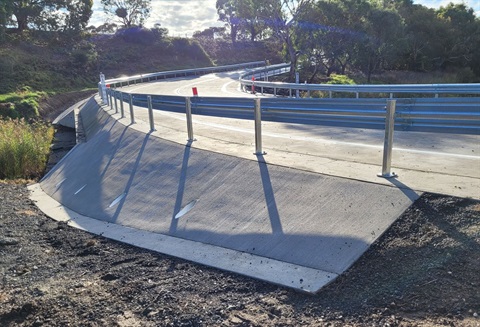
A thorough assessment of claims made about two Emissions Reduction Fund (ERF) methods has been released by the Emissions Reductions Assurance Committee (ERAC).
The assessment found the claims were not substantiated and there were serious deficiencies in the analysis of the two ERF methods.
Claims had been made in March 2022 by Professor Macintosh about the Landfill Gas Generation method and by Professor Macintosh and a small group of academics, about the Human Induced Regeneration Method (HIR).
These claims were carefully reviewed by the ERAC, an independent statutory committee set up under Commonwealth legislation to ensure the integrity of the methods being used to reduce carbon emissions.
The ERAC takes very seriously its role to safeguard the integrity of ERF methods and has given these matters serious and careful consideration.
The ERAC found that claims concerning the Human Induced Regeneration (HIR) method failed to present robust evidence of a lack of integrity or over-crediting.
A key flaw in the Macintosh claims on HIR is that they rely on an incomplete data set. The areas of land where the project activity to remove grazing animals actually takes place (known as carbon estimation areas (CEAs)) – cannot be publicly released because of legislative restrictions. The analysis of Professor Macintosh (et al) therefore relied on indicative project areas only. In contrast, the analysis conducted by the ERAC is supported by detailed evidence, which draws on the actual location data of the CEAs. Once all data and information are taken into account, it is clear the HIR method supports projects that demonstrably increase the amount of vegetation regenerating, and thus, storing carbon. This regeneration is beyond climatic and other factors.
There are also serious deficiencies in the analysis presented on the landfill gas generation method. Specifically, the ERAC considered actual data from landfill gas generators which showed costs can exceed revenue (from sales of electricity and large-scale generation certificates) for larger, as well as smaller generators. Consequently, the ERAC found there was no basis for the Macintosh paper’s claim that such projects are profitable without the need for Australian carbon credit units (ACCUs). The ERAC stands by its previous findings that all projects covered by this method meet the legislative requirements.
Notwithstanding their highly technical basis, the claims have been cloaked in extravagant language including an allegation by Professor Macintosh that: ‘What is occurring is a fraud on the environment, a fraud on taxpayers and a fraud on unwitting private buyers of ACCUs.’
The issuance of Australian Carbon Credit Units (ACCUs) is underpinned by a comprehensive set of audit requirements, with every project subject to at least three independent audits during its crediting period. Lessons learnt from the Clean Energy Regulator’s (CER) administration of ERF projects directly informs work on new or varied methods, which means method development and scheme administration are subject to continuous improvement. Critics of the scheme have not been privy to the CER’s sustained focus on careful administration of these requirements.
In conclusion, the ERAC found existing compliance mechanisms are working effectively, and established that both the HIR and landfill gas generation methods meet the Offsets Integrity Standards set out in the ERF legislation.
Further detail
As part of its assessment, the ERAC identified significant deficiencies (see below) in the Macintosh analysis undertaken of both the HIR (with other authors) and landfill gas generation methods.
ERAC findings on the Human Induced Regeneration method
The ERAC has identified serious deficiencies in the Macintosh paper’s analysis of the HIR method. In seeking to assess the impact of project activity on regenerating vegetation in the HIR projects, Macintosh et al have relied heavily on GIS images and publicly available data. But a key data set – the areas of land where the project activity to remove grazing animals actually takes place (known as carbon estimation areas (CEAs)) – cannot be publicly released due to legislative restrictions. The reliability of the analysis of Macintosh et al is consequently distorted by not having access to CEA data.
In contrast, the analysis conducted by the ERAC is supported by detailed evidence, which draws on the actual location data of the CEAs. Once the location of CEAs is included, a marked impact in the average percentage increase in vegetation in CEAs, compared to the surrounding areas, can be determined. It shows that the HIR projects demonstrably increased the amount of vegetation regenerating, compared to areas not directly subject to project activity.
ERAC findings on the Emissions Reduction Fund’s Landfill Gas Generation method
The ERAC has identified serious deficiencies in the Macintosh paper’s analysis of the landfill gas generation method. In seeking to assess the additionality of landfill gas generation projects, the Macintosh paper relies heavily on average annual wholesale prices and short-term projections for electricity in the National Electricity Market (NEM) and LGCs from 2003 to 2025. The Macintosh paper argues that large landfill gas generation operations are profitable without the need for Australian carbon credit units (ACCUs) and the abatement associated with prevention of release of methane would therefore occur in the ordinary course of events.
In contrast, the ERAC examined combined actual and projected prices for LGCs and electricity up to 2028, when it reviewed the need for a landfill gas generation method in 2021, as the proposed extended crediting period would have run until 2028. Further, the ERAC’s industry consultation revealed that in practice, operators of landfill gas generation projects receive significantly lower prices than NEM average prices. Landfill operators try to reduce pricing risk with forward contracting but still face the direct impact of negative pricing in the NEM. As well as the revenue received by landfill gas generators, the ERAC considered actual cost data from landfill gas generators. This data showed costs can exceed revenue for larger as well as smaller generators, even when LGCs and electricity prices are considered. A further consideration is that generation projects are more costly than flaring projects and therefore, it does not follow that electricity sales plus LGCs make a generation project more commercial than flaring only.
Given these market influences, it is unlikely landfill gas generation projects would be pursued in the absence of ACCUs being available to projects.
Integrity mechanisms in the ERF
The HIR and landfill gas generation methods, like other methods, are supported by a raft of integrity mechanisms in the ERF. The ERF scheme is established in legislation and is administered by the CER, as an independent regulator with a range of compliance tools that are applied rigorously. The integrity safeguards in the ERF go beyond the methods themselves. Further assurance on a project-by-project basis arises from the rigorous compliance assessment conducted by the CER.
David Byers
Chair, ERAC
8 June 2022








